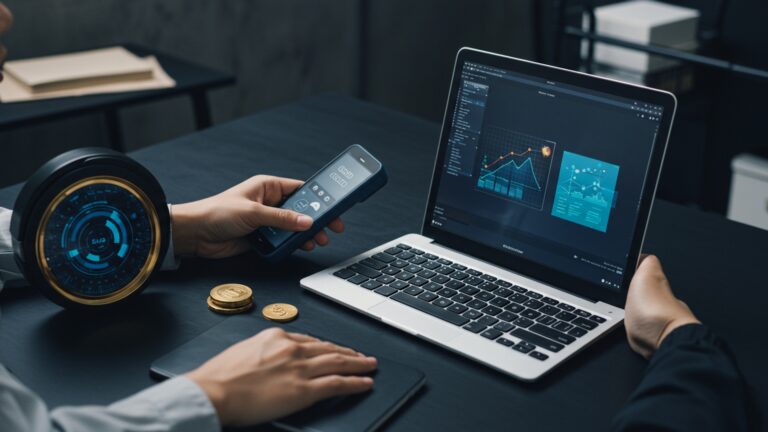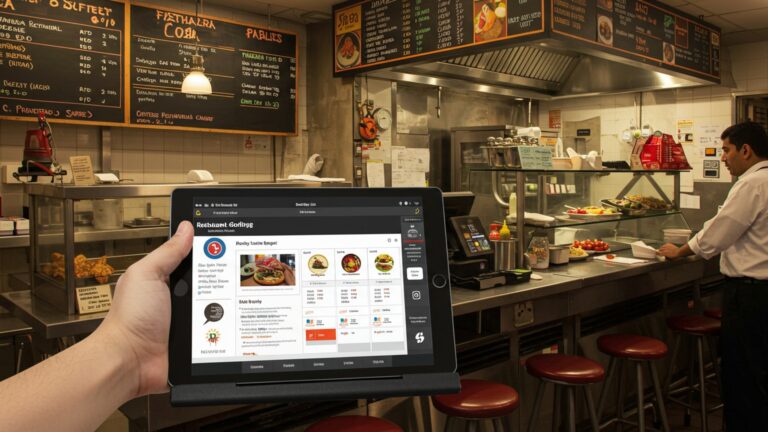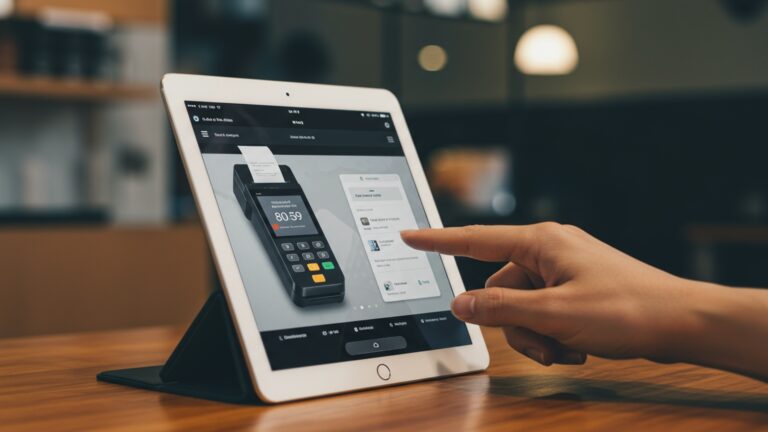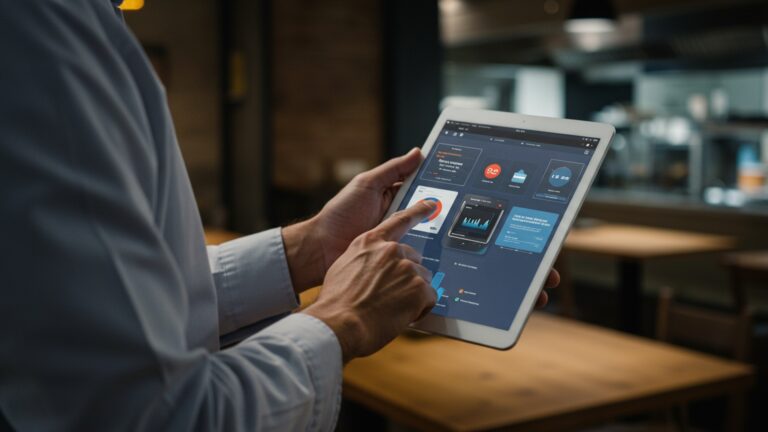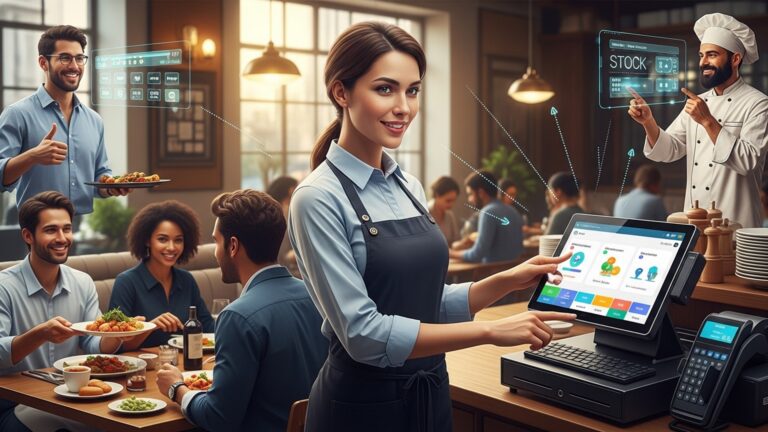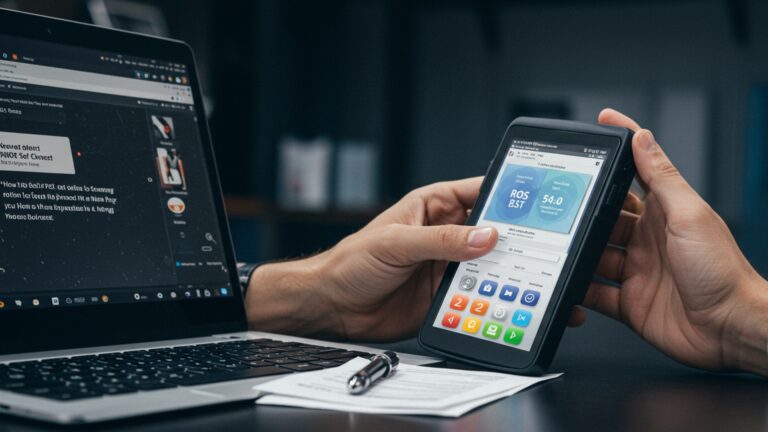How to Choose and Implement POS Software for Retail Success
The modern retail landscape demands more than just a simple cash register; robust POS software for retail is now the strategic command center, orchestrating everything from inventory to customer loyalty. Retailers face increasing pressure to deliver seamless omnichannel experiences, making the selection of an integrated system critical. Consider how cloud-based solutions now offer real-time analytics, empowering businesses to personalize offers or optimize stock levels instantly, a significant evolution from legacy systems. For instance, a system integrating seamlessly with e-commerce platforms and mobile payments, like Apple Pay or Google Pay, significantly enhances customer flow and data capture. The right POS software for retail drives efficiency, reduces costly errors. unlocks actionable insights crucial for adapting to dynamic consumer behaviors and market shifts.
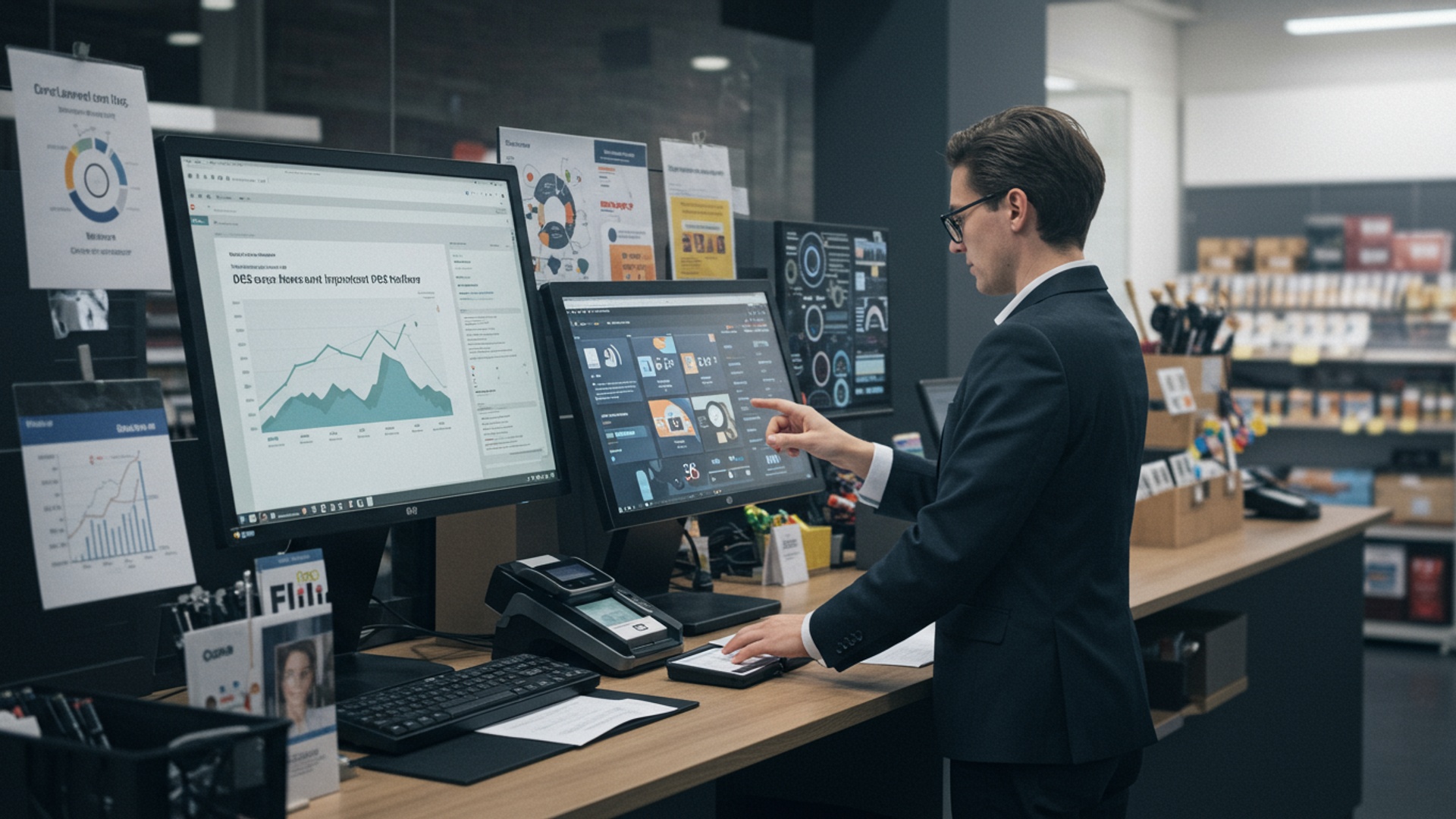
Understanding the Core: What is POS Software for Retail?
At its heart, a Point of Sale (POS) system is more than just a cash register; it’s the central nervous system of a modern retail operation. When we talk about pos software for retail, we’re referring to a sophisticated application that processes transactions, manages inventory, tracks customer data. provides invaluable insights into business performance. Historically, retailers relied on simple mechanical cash registers for sales and ledgers for inventory. The evolution to today’s advanced POS software has been transformative, moving from bulky, on-premise systems to sleek, cloud-based platforms accessible from virtually anywhere.
A POS system typically consists of both hardware and software. While hardware includes components like barcode scanners, receipt printers, cash drawers. card readers, the software is where the true power lies. It’s the engine that drives every function, from scanning an item and calculating the total to processing payments and updating inventory levels in real-time. Understanding this fundamental concept is the first step towards leveraging its potential for retail success.
Why Modern POS Software is Indispensable for Retailers
The competitive landscape of retail today demands efficiency, agility. a deep understanding of customer behavior. Modern pos software for retail isn’t just a convenience; it’s a strategic imperative. Retailers who embrace advanced POS solutions gain a significant edge, moving beyond basic transaction processing to unlock a multitude of benefits that directly impact their bottom line and customer experience.
- Enhanced Efficiency
- Precision Inventory Management
- Superior Customer Experience
- In-depth Reporting and Analytics
- Scalability and Adaptability
- Omnichannel Capabilities
Speed up checkout times, reduce manual errors. streamline daily operations. An efficient POS system means less waiting for customers and more productive staff.
Gain real-time visibility into stock levels, track product movement, identify best-sellers and slow-movers. automate reordering. This minimizes stockouts and overstocking, crucial for profitability.
Access customer purchase history, preferences. loyalty program details instantly. This enables personalized recommendations, targeted promotions. a seamless shopping journey, fostering repeat business.
Generate comprehensive reports on sales trends, employee performance, peak hours. product profitability. These insights empower data-driven decisions, optimizing marketing strategies and operational adjustments.
As your business grows, your POS system should grow with it. Modern solutions are designed to handle increasing transaction volumes, new product lines. additional store locations with ease.
Integrate online and offline sales channels, providing a unified view of your business. This is vital for retailers operating both brick-and-mortar stores and e-commerce platforms.
For example, a boutique clothing store that implements robust pos software for retail can quickly identify which sizes and styles are selling fastest, allowing them to reorder popular items proactively and avoid discounting slow-moving stock. This direct impact on inventory turns and revenue highlights its indispensable role.
Key Features to Look for in POS Software for Retail
When evaluating pos software for retail, it’s crucial to look beyond the basic transaction capabilities and identify features that will truly empower your specific business needs. The right suite of features can differentiate an adequate system from an exceptional one.
- Transaction Processing
- Quick and intuitive sales interface.
- Ability to handle various payment types (cash, credit/debit cards, mobile payments, gift cards).
- Refunds, returns. exchanges management.
- Discount and promotion application.
- Ability to hold/park sales.
- Inventory Management
- Real-time stock tracking across multiple locations.
- Automated reorder points and vendor management.
- Barcode scanning and generation.
- Product variations (size, color) and bundles.
- Inventory counts and adjustments.
- Customer Relationship Management (CRM)
- Customer profiles with purchase history.
- Loyalty programs and rewards management.
- Email and SMS marketing integration.
- Personalized recommendations.
- Employee Management
- Time clock functionality for clock-in/out.
- Permission-based access levels for different roles.
- Sales performance tracking for individual employees.
- Commission tracking.
- Reporting and Analytics
- Sales reports (daily, weekly, monthly, by product, by employee).
- Inventory reports (stock levels, turnover, dead stock).
- Customer reports (top customers, loyalty program effectiveness).
- Customizable dashboard with key performance indicators (KPIs).
- Integrations
- E-commerce platform integration (e. g. , Shopify, WooCommerce) for omnichannel syncing.
- Accounting software integration (e. g. , QuickBooks, Xero) for streamlined bookkeeping.
- Payment processor integration for secure transactions.
- Third-party app marketplace for extended functionality.
- Security
- PCI compliance for secure card processing.
- Role-based access controls.
- Data backup and recovery features.
- Fraud prevention tools.
- Multi-Store Capabilities
- Centralized management of inventory, customers. reporting across all locations.
- Ability to transfer stock between stores.
A specialty food store, for instance, would highly value features like inventory tracking by expiry date and ingredient management, alongside robust sales reporting, which are specific to its retail niche.
On-Premise vs. Cloud-Based POS: A Critical Comparison
One of the most significant decisions when choosing pos software for retail is whether to opt for an on-premise (also known as local or legacy) or a cloud-based (SaaS – Software as a Service) solution. Each has distinct characteristics that impact cost, flexibility. operational management.
This type of system requires the software to be installed directly on your own servers and computers within your physical store. You own the software license and are responsible for its maintenance, updates. data storage.
With a cloud-based system, the software is hosted on remote servers by the vendor and accessed via the internet through a web browser or dedicated app. You typically pay a recurring subscription fee for its use. the vendor handles maintenance, updates. data security.
| Feature/Aspect | On-Premise POS | Cloud-Based POS |
|---|---|---|
| Cost Structure | High upfront cost (software license, hardware, installation). Lower ongoing subscription fees (if any). | Lower upfront cost (minimal hardware). Higher ongoing subscription fees (monthly/annual). |
| Accessibility | Primarily accessible within the store network. Remote access often requires complex setup (VPN). | Accessible from anywhere with an internet connection on multiple devices (PC, tablet, smartphone). |
| Data Storage & Security | Data stored locally on your servers. You are responsible for backups, security. compliance. | Data stored securely in the cloud (vendor’s responsibility). Vendor handles backups, security updates. PCI compliance. |
| Maintenance & Updates | Requires internal IT staff or external contractors for updates, maintenance. troubleshooting. | Vendor handles all software updates, maintenance. bug fixes automatically. |
| Scalability | Can be challenging and costly to scale (requires additional hardware, licenses, IT resources). | Easily scalable; add new users, locations, or features with a few clicks and subscription adjustments. |
| Offline Capability | Typically functions without an internet connection once installed. | Requires internet connection for full functionality; some offer limited offline mode for transactions that sync later. |
| Customization | Often offers deeper customization options. requires specialized IT knowledge. | Customization is usually limited to what the vendor provides. integrations are often extensive. |
For a small, single-location retailer with limited IT resources, a cloud-based solution often presents a more attractive and manageable option due to its lower upfront costs and ease of use. Larger enterprises with specific security policies or complex, unique operational requirements might prefer the control offered by an on-premise system.
Choosing the Right POS Software for Your Retail Business: A Step-by-Step Guide
Selecting the optimal pos software for retail is a strategic decision that can significantly impact your operational efficiency and profitability. It requires careful consideration and a structured approach.
- Assess Your Current Needs and Pain Points
- What problems are you trying to solve with a new POS? (e. g. , slow checkout, inaccurate inventory, lack of customer data).
- List essential features your business absolutely cannot function without.
- Consider your average transaction volume, number of employees. store locations.
- Define Your Budget
- Determine both your upfront budget (for hardware, setup, initial licensing) and your ongoing budget (for subscription fees, maintenance, support).
- Factor in potential costs for data migration and staff training.
- Consider Your Industry/Niche
- Different retail sectors have unique requirements. A grocery store needs scale weighing integration, while a fashion boutique needs robust inventory management for sizes and colors.
- Look for industry-specific features or solutions tailored to your niche.
- Prioritize Scalability
- Think about your future growth plans. Will you open more stores? Expand your product lines? Your POS should be able to accommodate this growth without requiring a complete overhaul.
- Ensure it can handle increased transaction volumes and additional users.
- Evaluate Vendor Reputation and Support
- Research potential vendors thoroughly. Read reviews, check case studies. inquire about their track record.
- Assess the quality of their customer support. What are their response times? Do they offer 24/7 support? What training resources are available? Reliable support is crucial when issues arise.
- Request Demos and Utilize Trial Periods
- Never commit without seeing the software in action. Request personalized demos that address your specific business needs.
- If available, take advantage of free trial periods to test the software with your own products and processes. Get your key staff involved in testing.
- Check for Essential Integrations
- Ensure the POS integrates seamlessly with your existing or planned e-commerce platform, accounting software. any other critical business tools.
- Poor integration can create data silos and negate many of the benefits of a modern POS.
By following these steps, a small bookstore owner, for instance, can identify pos software for retail that offers excellent inventory management for a large volume of unique SKUs, integrates with online sales channels. provides robust reporting on genre popularity, all while staying within a manageable budget.
The Implementation Journey: Bringing Your POS Software to Life
Once you’ve chosen the ideal pos software for retail for your business, the next critical phase is implementation. A well-executed implementation ensures a smooth transition and maximizes the return on your investment. This isn’t just about installing software; it’s about integrating it into your entire retail ecosystem.
- Data Migration
- This is often the most time-consuming step. You’ll need to transfer existing product data (SKUs, descriptions, prices, stock levels), customer data. possibly historical sales data into the new system.
- Actionable Tip
- Work closely with your vendor’s support team or a data migration specialist to ensure accuracy and completeness.
- Hardware Setup and Configuration
- Install and connect all necessary hardware components: barcode scanners, receipt printers, cash drawers, card readers. any tablets or computers.
- Ensure all devices are communicating correctly with the new POS software. This often involves specific driver installations and network configurations.
- Staff Training
- Comprehensive training is paramount. Even the best pos software for retail is ineffective if your staff doesn’t know how to use it.
- Conduct hands-on training sessions for all relevant employees, including cashiers, managers. inventory staff.
- Cover all key functions: processing sales, handling returns, managing inventory, clocking in/out. accessing reports.
- Real-World Example
- System Testing
- Before a full launch, perform extensive testing of all critical workflows.
- Process various types of transactions (cash, card, refund, discount, gift card).
- Test inventory updates, loyalty program applications. report generation.
- Identify and address any bugs or integration issues during this phase.
- Go-Live Strategy
- Choose a low-traffic period for the official launch to minimize disruption.
- Have a dedicated support team (internal or vendor-provided) on-site or readily available during the initial days.
- Have a fallback plan in case of unexpected issues (e. g. , ability to process manual sales if the system temporarily goes down).
- Post-Implementation Review and Optimization
- Regularly gather feedback from staff and customers.
- Monitor system performance and key metrics.
- Identify areas for further training or optimization of workflows.
- Leverage the reporting features of your pos software for retail to continuously refine your operations.
Clean your data thoroughly before migration. Remove duplicates, update outdated details. standardize formats. This prevents “garbage in, garbage out” scenarios.
A busy grocery store, after installing new self-checkout kiosks powered by advanced POS software, conducted multiple training sessions for staff on how to assist customers, troubleshoot common issues. manually override transactions. This proactive approach minimized customer frustration during the transition.
An effective implementation of pos software for retail isn’t a one-time event; it’s an ongoing process of adaptation and optimization that ensures your technology continues to serve your business goals.
Real-World Success Stories and Common Pitfalls
Understanding the potential for success, as well as the common missteps, can guide your journey with pos software for retail. Many retailers have leveraged these systems to transform their businesses, while others have stumbled due to avoidable errors.
Success Story: The Local Artisan Market’s Digital Leap
Consider ‘The Crafted Nook,’ a multi-vendor artisan market that initially relied on individual cash boxes and manual inventory sheets. This led to inaccurate stock counts, slow checkouts. no real insight into which artisans or products were performing best. After implementing a cloud-based pos software for retail, specifically chosen for its multi-vendor capabilities and robust inventory tracking:
- Checkout times dropped by 40%, significantly improving customer satisfaction during peak hours.
- Artisan payouts became automated and accurate, fostering better relationships with vendors.
- Management gained real-time data on sales trends, allowing them to optimize store layout, promote best-selling items. identify underperforming products for removal or repositioning.
- The system’s built-in CRM allowed them to launch a successful loyalty program, increasing repeat customer visits by 25%.
This market saw a substantial increase in operational efficiency and revenue within the first year, directly attributable to the strategic choice and implementation of their POS system.
- Underestimating Data Migration Complexity
- Neglecting Staff Training
- Ignoring Integration Needs
- Failing to Plan for Scalability
- Lack of Ongoing Review and Optimization
- Over-customization at the Expense of Updates
Many businesses rush this step, leading to errors in pricing, inventory, or customer data that can cause significant operational headaches down the line. Dedicate ample time and resources to accurate data transfer.
A powerful POS system is useless if your staff isn’t proficient. Insufficient training leads to slow transactions, user errors, frustration. ultimately, underutilization of the software’s capabilities. Invest in thorough, hands-on training.
Choosing a pos software for retail that doesn’t integrate with your existing e-commerce platform or accounting software can create data silos, requiring manual data entry and undermining efficiency gains. Always verify integration capabilities before committing.
Selecting a system that barely meets current needs can be a costly mistake. If your business grows, you might quickly outgrow a limited POS, forcing another expensive and disruptive migration sooner than anticipated.
A POS system isn’t a “set it and forget it” solution. Failing to regularly review reports, gather feedback. adapt your usage to evolving business needs means you’re not maximizing its potential.
While some customization can be beneficial, heavily customized on-premise solutions can make future software updates difficult and costly, leading to an outdated and less secure system over time.
By learning from these experiences, retailers can proactively navigate the challenges and successfully harness the power of pos software for retail to achieve sustained growth and customer satisfaction.
Conclusion
Choosing and implementing POS software isn’t merely a technical upgrade; it’s a strategic investment in your retail future. Remember, the perfect system acts as a silent business partner, not just a cash register. My personal tip? Don’t just look at features; envision how each one will simplify daily tasks for your team, perhaps even streamlining inventory counts like that recent update I saw for real-time stock adjustments. Focus on scalability, ensuring the solution can grow with your ambitions, whether you’re adding new product lines or expanding to multiple outlets. Consider modern trends like cloud-based systems and robust mobile POS options, as these offer unparalleled flexibility and insights into customer behavior, allowing you to adapt swiftly in our ever-evolving market. Embrace this process with a clear vision, knowing that a well-chosen POS transforms operations, enhances customer experiences. ultimately propels your retail success into a new era of efficiency and profitability.
More Articles
How to Master POS Billing Software for Efficient Retail Operations
How to Choose the Best Mobile POS Software for Your Business
How to Implement POS Software for Your Grocery Store Seamlessly
Learn How to Streamline Your Business With Billing and POS Software
FAQs
Where do I even start when looking for new POS software?
Begin by assessing your current retail needs and pain points. Think about your store size, inventory volume, customer base. any specific features you absolutely can’t live without, like multi-store management or advanced reporting. This helps narrow down the options significantly.
What are the absolute essential features a retail POS system should have?
At a minimum, look for robust inventory management, sales processing (including returns and exchanges), customer management (CRM), employee management. basic reporting. Cloud-based solutions are often preferred for accessibility and real-time data. Mobile POS capabilities can also be a huge plus for flexibility.
How essential is it for my POS to play nice with other software I use?
Very vital! Seamless integration with your e-commerce platform, accounting software. loyalty programs saves tons of time and prevents data silos. It ensures consistent insights across your business, reducing manual errors and improving overall efficiency. Always ask about existing integrations or API availability.
My staff isn’t super tech-savvy. How do I make sure they can actually use the new POS?
User-friendliness is key. Choose a system with an intuitive interface. Beyond that, prioritize vendors who offer comprehensive training resources – whether it’s video tutorials, live webinars, or on-site sessions. Plan dedicated training time for your team before the go-live date. make sure there’s ongoing support available.
What kind of budget should I set aside for a new POS system?
POS costs vary widely. You’ll typically encounter subscription fees (monthly or annually), one-time hardware costs, implementation fees. potential add-on module costs. Get clear, itemized quotes from vendors. Remember to factor in not just the initial price. also ongoing support and maintenance expenses.
After I pick a system, what kind of support should I expect from the vendor?
Good vendor support is crucial. Look for vendors offering multiple channels like phone, email. live chat, preferably with quick response times. 24/7 support can be a lifesaver, especially for retailers with varied operating hours. Always read reviews about their customer service before committing.
Okay, I’ve chosen one. What’s the actual implementation process like?
Usually, it starts with data migration (importing your products, customers, etc.). Then comes hardware setup, software configuration. staff training. It’s wise to do a phased rollout or a soft launch to catch any issues early. Having a dedicated project manager, either in-house or from the vendor, can guide you through each step smoothly.

